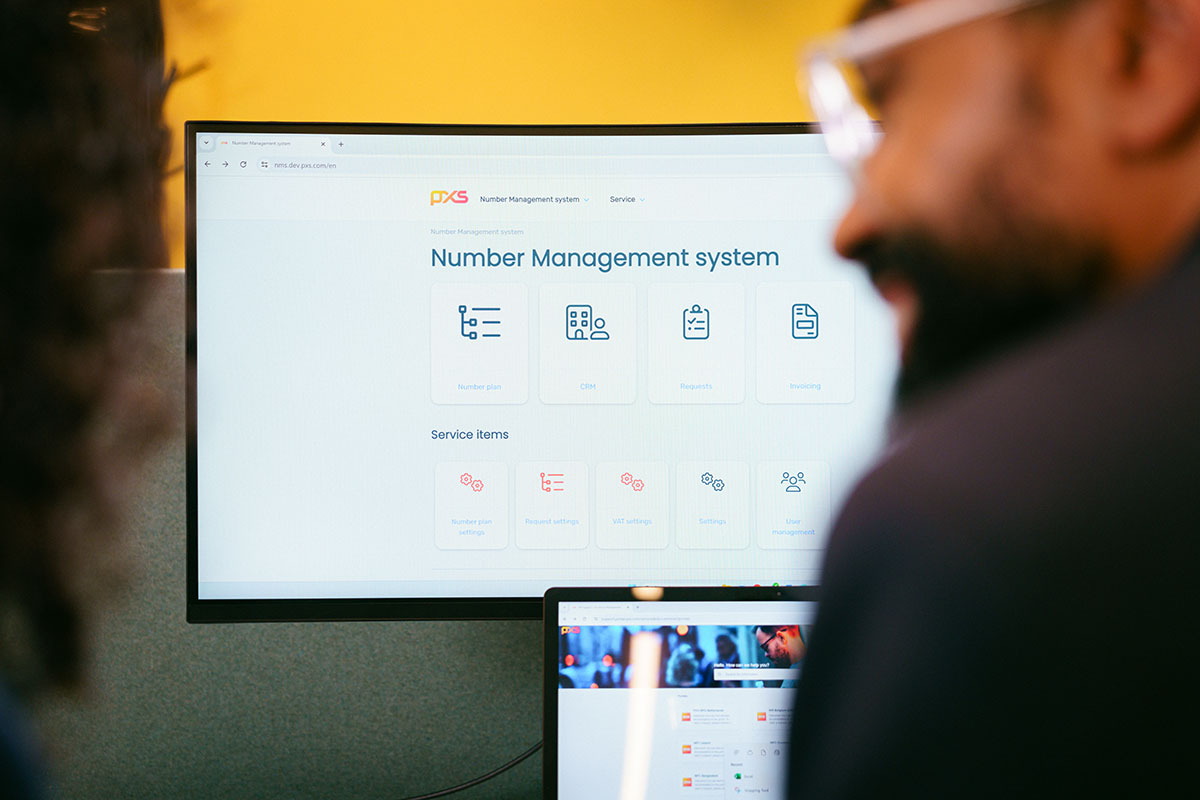Why mastering number management is crucial: key tips to stay ahead

Bart Derks
Chief Product Officer at PXSIf you use a spreadsheet to manage your national number plan, you’re not alone. At the same time, managing number resources is a vital part of the regulator’s operation – and it will impact telecom operators and end users when it’s not done well. A disorganized number plan may result in failed calls or text messages and causes issues with porting a phone number from one operator to another. Throughout this article, we talk about the impact of haphazard number management, and how to organize it consistently, securely and effectively.
Managing your number plan manually – for example, through a spreadsheet – might work for you now. Experienced employees are probably aware of important details and know how to keep the plan up-to-date. But what if you have a change of personnel, or the number plan gets too complex or too extensive for your team to handle? Making mistakes is only human, but even a small error can have big consequences.
Here are some reasons why to streamline your number management.
1. Avoid negative impact on the end user
A big reason for well-organized number management is routing. Number routing ensures calls and SMS messages are directed to the correct network. Routing relies heavily on a correct number plan, since the number plan defines which network the phone number belongs to.
If that information is out of date or not properly communicated to both the national and international telecom industry, it could mean calls and messages fail. Among many other concerns, that causes issues with two-factor authentication through text messages (so-called A2P messaging). Nowadays, most banks, cloud providers and social media platforms demand SMS verification. Especially when it comes to international providers, it’s of paramount importance their messaging systems find your country’s subscribers.

2. Make number porting possible
Number portability is the process in which a customer keeps their phone number when switching telecom operators. Just as routing, number porting relies on a correct number plan. If the number portability system can’t verify which operator the number originally belongs to (or the information provided is incorrect), it won’t be able to port the number. To avoid porting issues for customers and operators, it’s crucial to inform your number portability provider of every change in the number plan.
3. Make number provisioning less complex
One of the regulator’s tasks is to manage numbering requests from operators, such as number range provisioning. Without the proper system in place, this process usually happens through (digital) forms. That is especially cumbersome in case of multiple requests, which requires the operator to repeatedly fill out the same information, such as details about their organization.
On the regulator side, all provisioned number ranges must be accurately documented. If not, there is a risk of providing the same resources twice. At the same time, relevant stakeholders have to be informed of all changes. All this results in a laborious process that’s prone to error.
With the above in mind, it's clear how improper or inefficient number management can have a lot of negative impact on regulators, operators, the international industry, and end users. But now for the next question: how to properly organize number management? Below, we describe four ways to organize your number management and improve efficiency and overview.

1. Centralize the national numbering plan
Instead of spending time informing operators about (un)available numbering resources, it might be a good idea to centralize and digitize your national number plan. This provides operators, local service providers and stakeholders with a quick overview of available and allocated resources. It’s the first step to empowering the regulator team, allowing them to execute tasks fast and effectively.
2. Automate the provisioning process
From centralizing the national number plan, the next step could be to automate provisioning in a central system. In an ideal situation, that process would function from both the regulator and operator side. An operator can request available numbering resources, while the regulator approves and allocates the resources to said operator.
For verification purposes, this approval process is usually multi-layered. For example, one department is allowed to assess and approve an initial request, with management executing final authorization for assignment.
It’s recommended to make the requesting of numbering resources a transparent process, where the operator can view the request status every step of the way. Next to that, the system could provide billing records for any approved operator request, to make invoicing easier.

3. Export and communicate the national number plan
To make sure national and international calls and SMS messages are properly routed, the number plan should be shared with relevant stakeholders – such as the International Telecommunication Union (ITU). To do that, the number management system has to be able to export data in an appropriate format, so it can be effectively communicated to relevant stakeholders and published on the regulator website.
4. Don't overlook premium numbers
In addition to fixed and mobile numbers, premium numbers, toll-free numbers and short codes also require attention. These special number categories are typically assigned individually. By ensuring they are accounted for in the number management system, you avoid assigning the same premium number or short code twice.
5. Don't forget about security
Considering the sensitive information, it’s essential that all data of the national number plan is securely managed and stored. That requires a system complying with data protection and security standards, addressing access roles, logging and backups.
Where to start with number management
Proper number management starts with the right system, ideally containing all key elements mentioned above. Still, next to functionality, it’s just as important that a number management system is implemented with international best practices in mind. That includes topics such as interfacing, security, and hosting.
A user-friendly system facilitates a smooth onboarding process for your team. Also ensure that the system allows you to configure local factors, such as currency, time zone and the specific numbering layout of the country.
In conclusion: when selecting the right number management system, find an intuitive and user-friendly solution, that empowers your team to do their tasks better and more efficiently.
Need to know how to organize your number management? Don't hesitate to reach out!

Latest Posts
Explore our knowledge base

Same number, better service: launching number portability in Guyana
New regulations in 2020 paved the way for introducing number portability in Guyana. PXS was selected to implement the Number Portability Clearinghouse.
Read more
How the Number Management System prepares Sint Maarten for the future
Sint Maarten set out to professionalize number management and lay out a proper foundation for the future. They chose the PXS Number Management System.
Read more
PXS achieves ISO 27001 certification
We're proud to share that PXS is now ISO27001 certified, the international standard for information security management.
Read moreGet in control of your numbers
Get started with numbering services today! Contact one of our experts to discuss your business case.